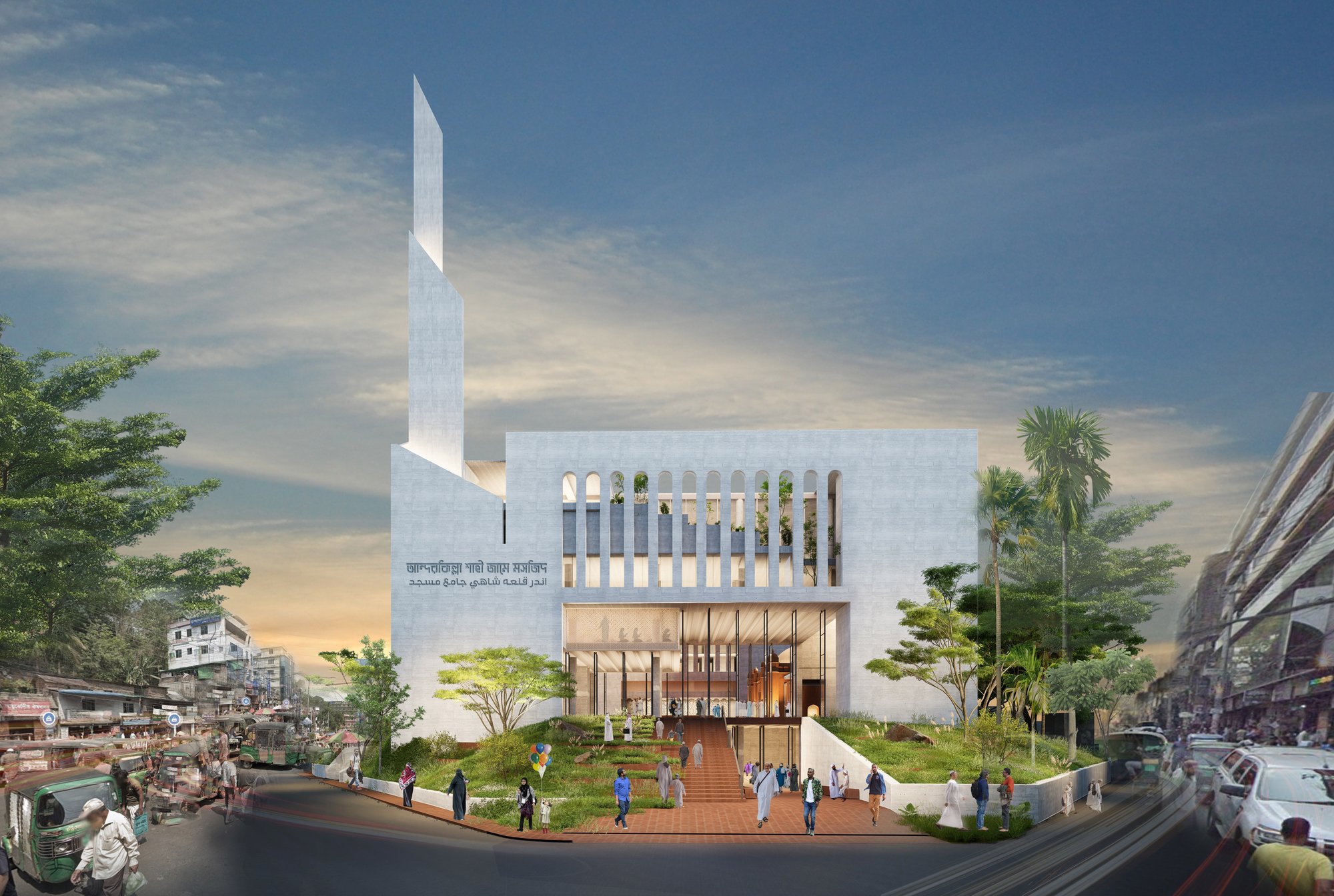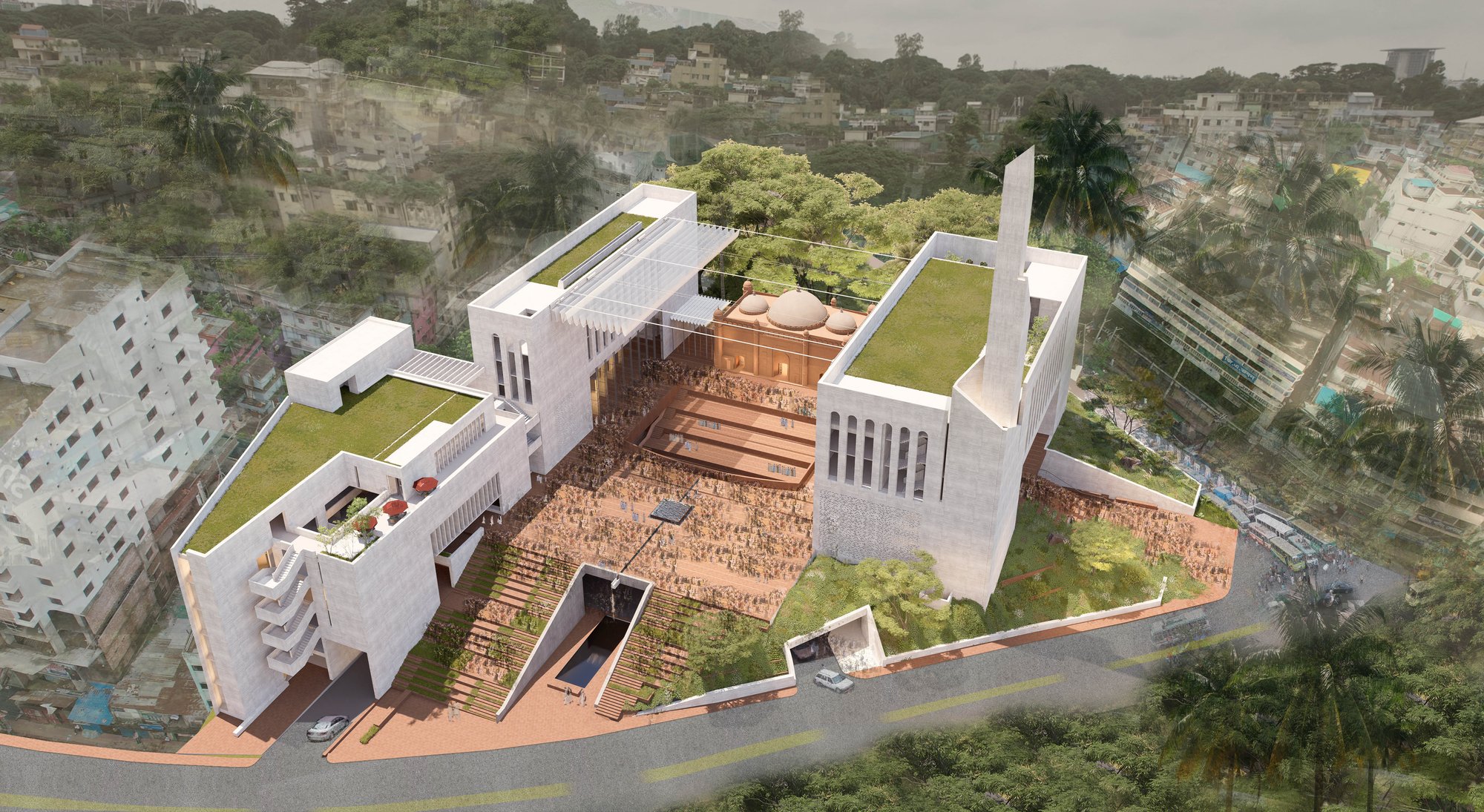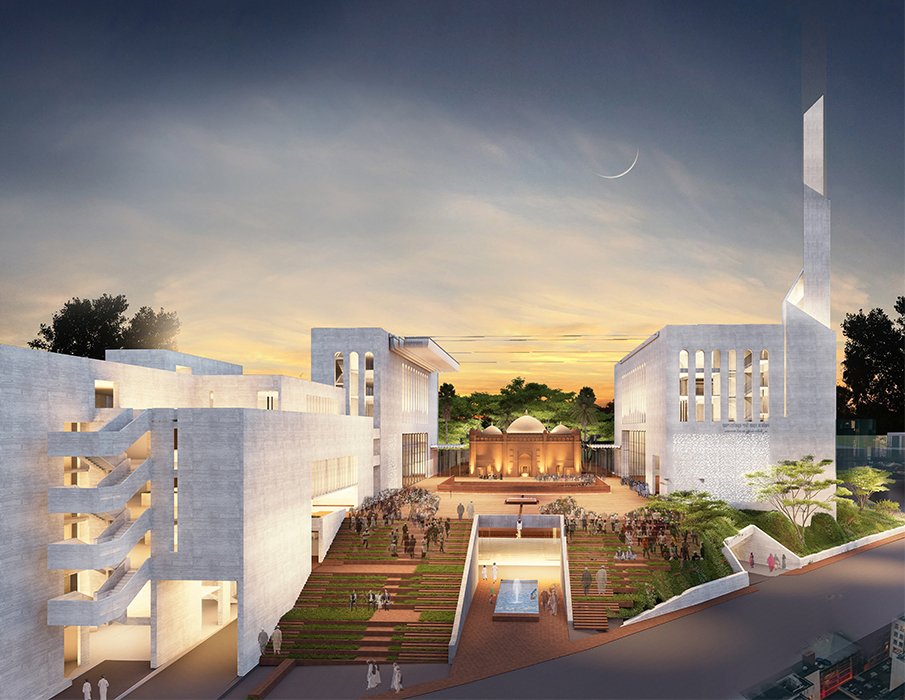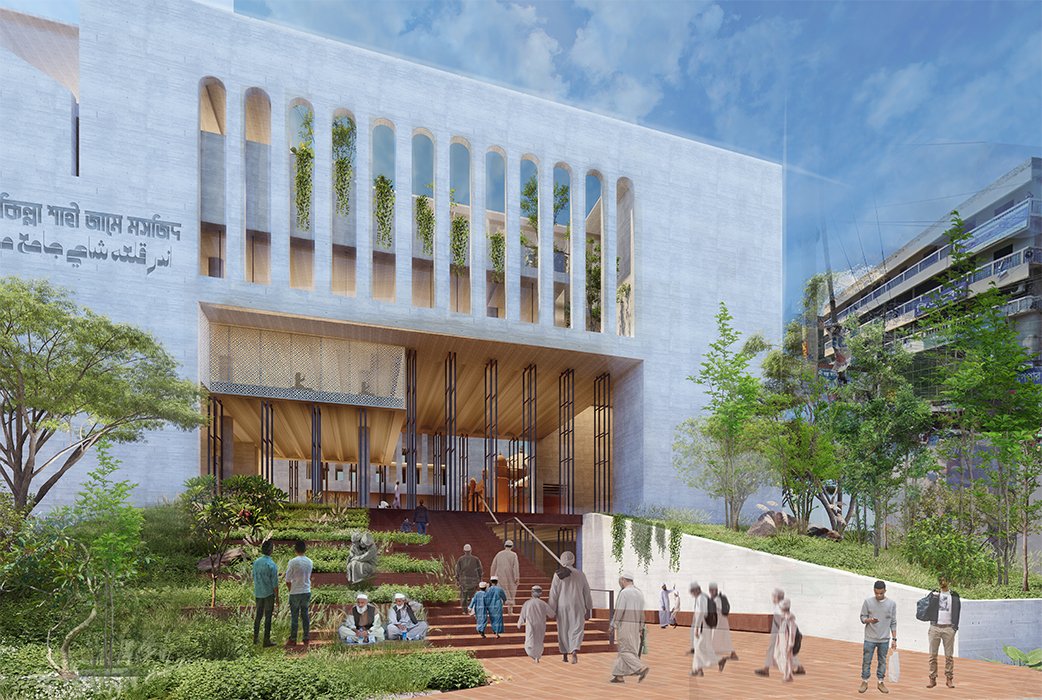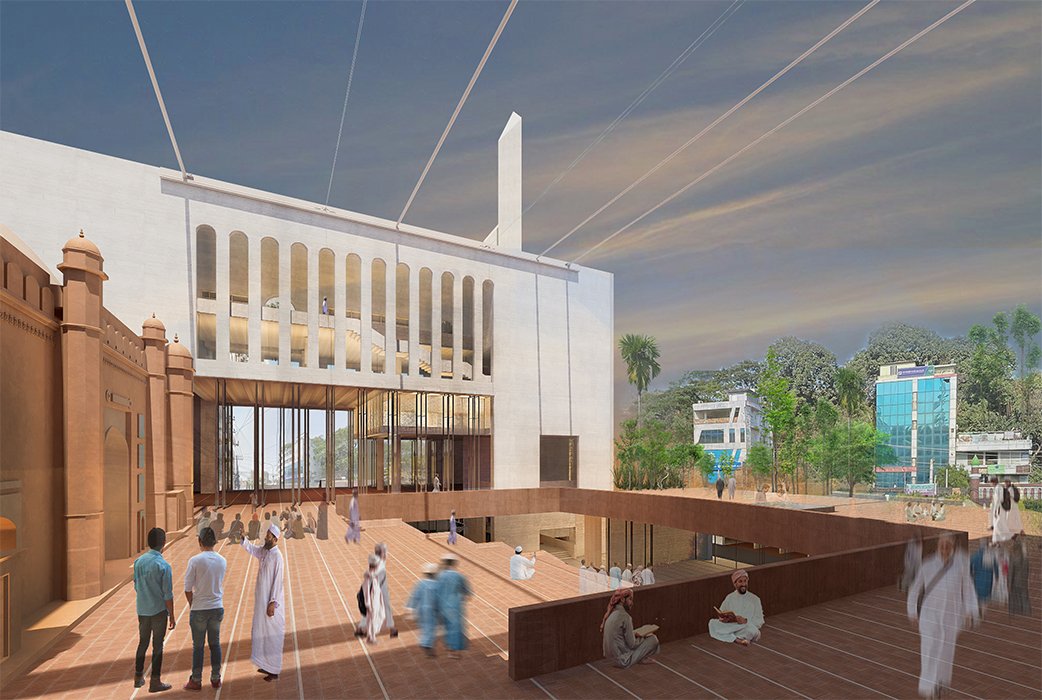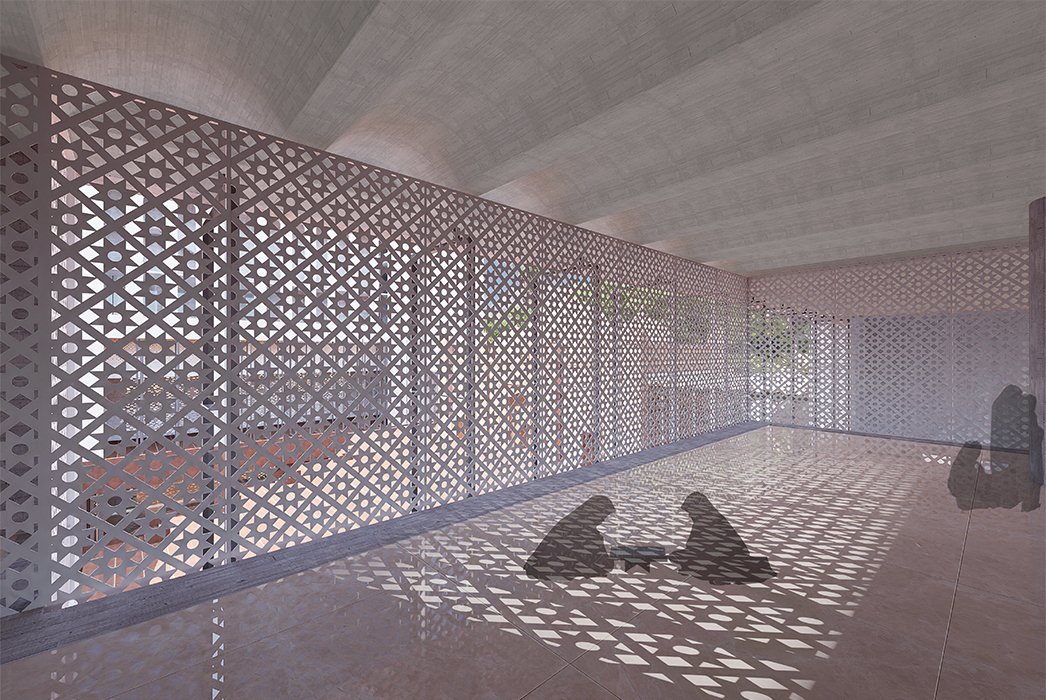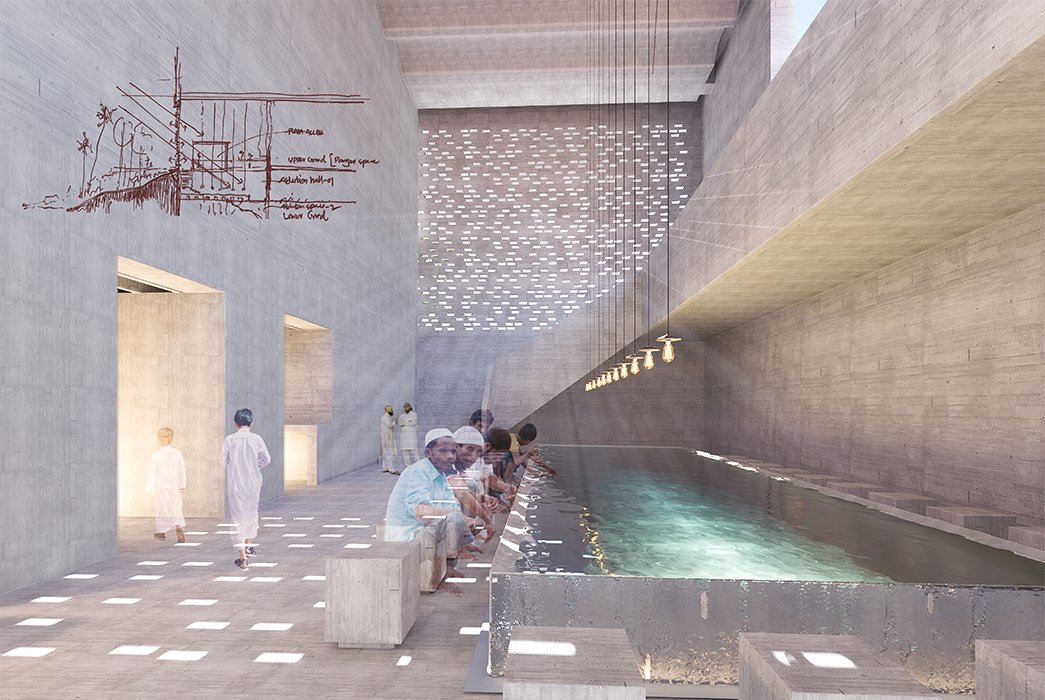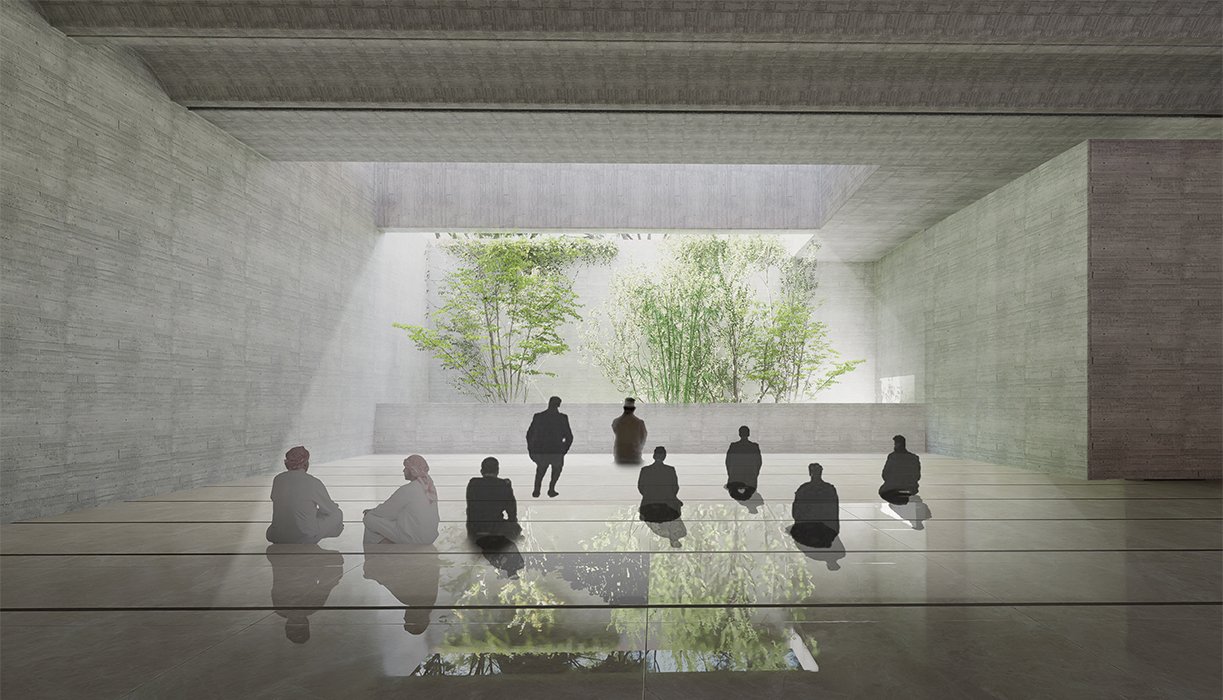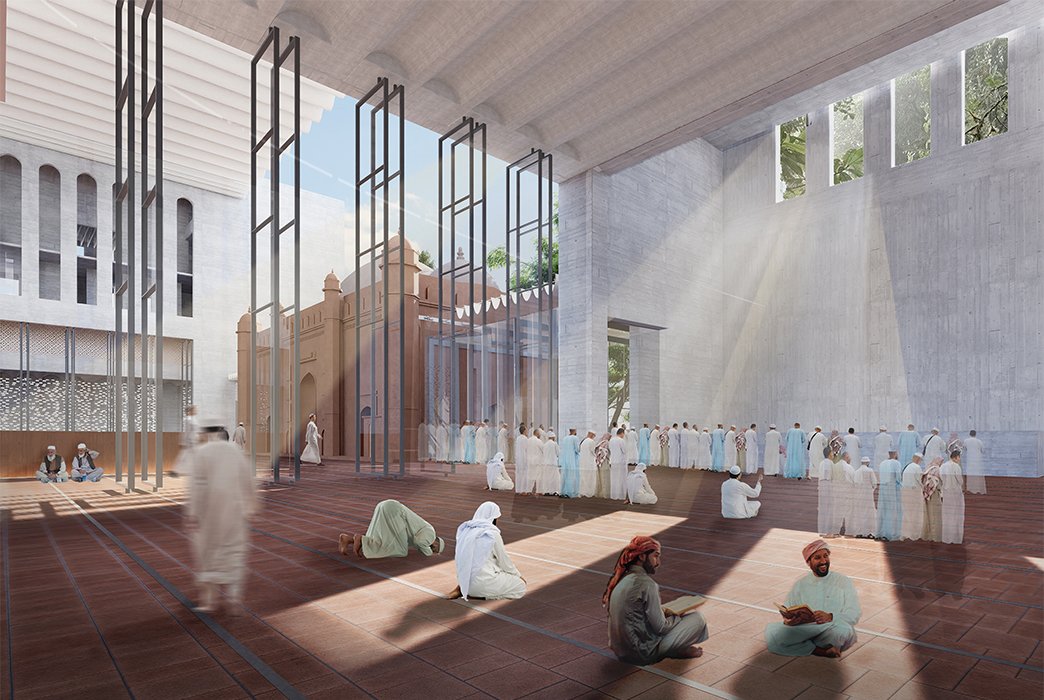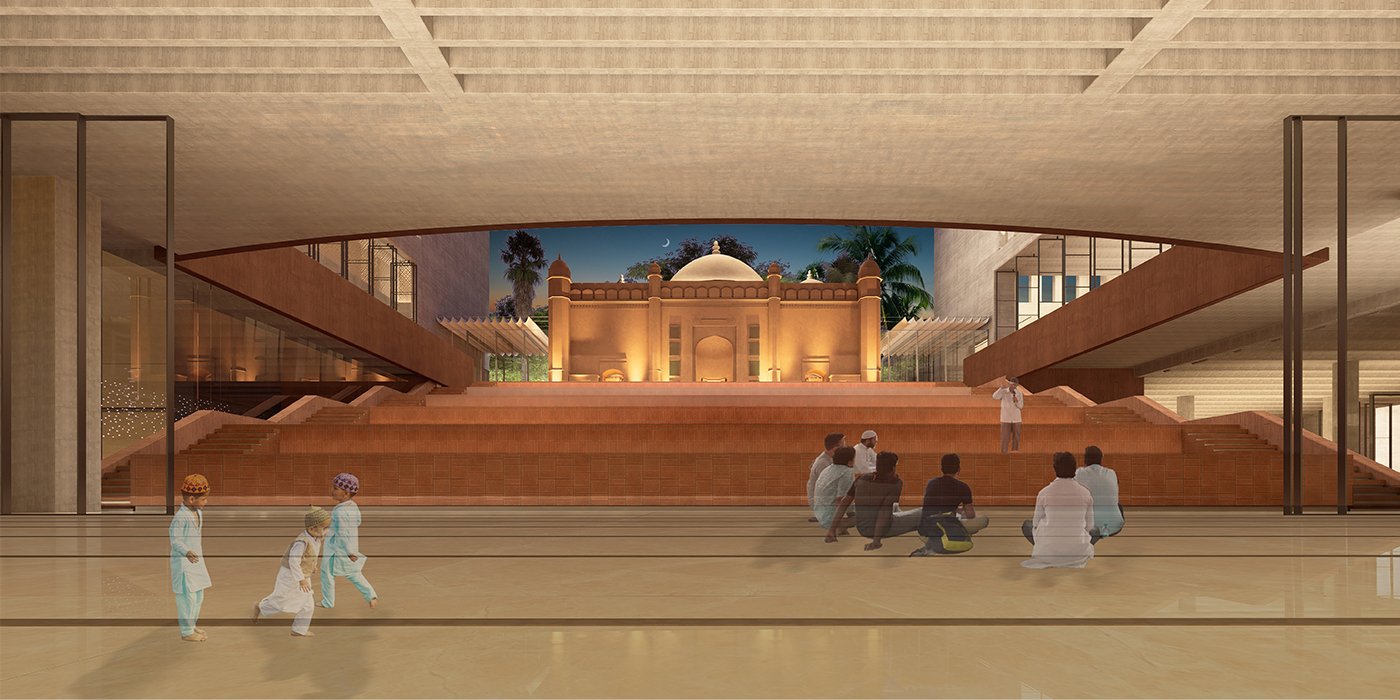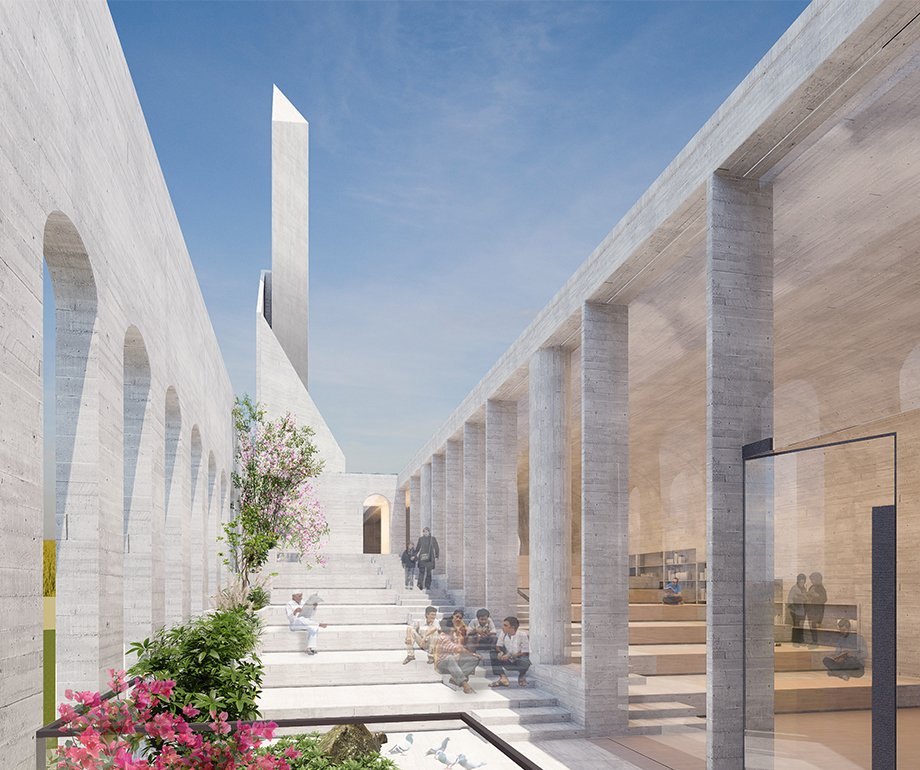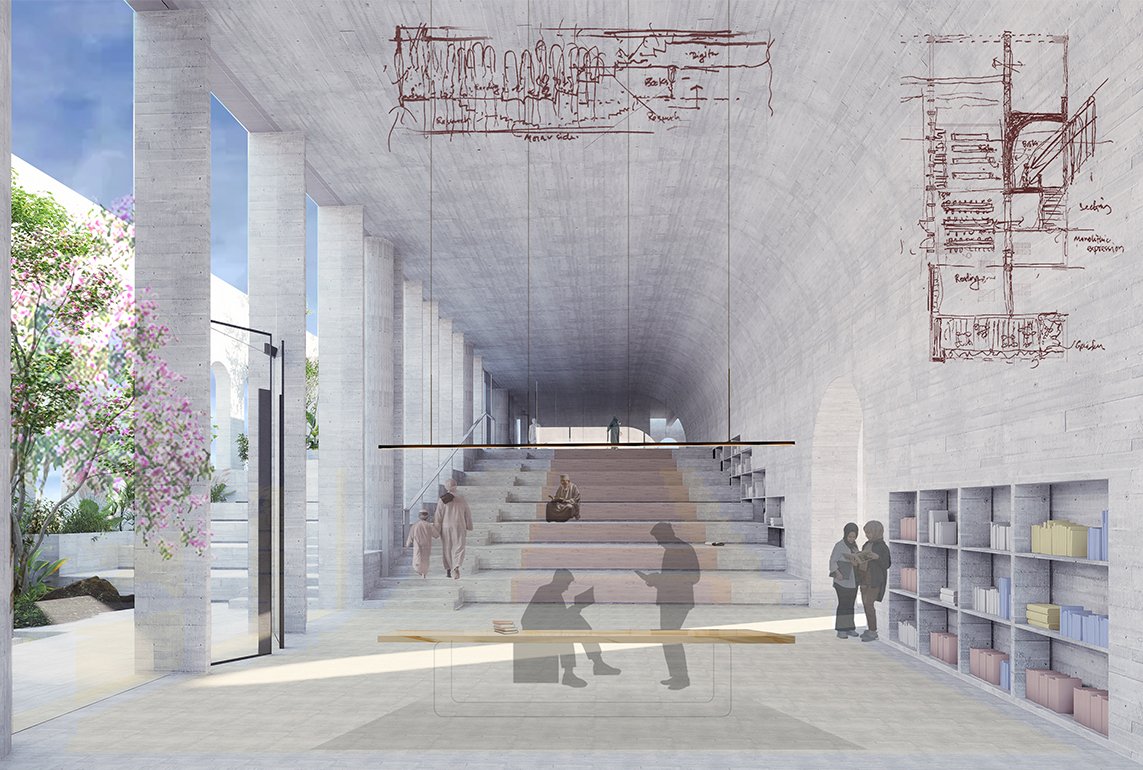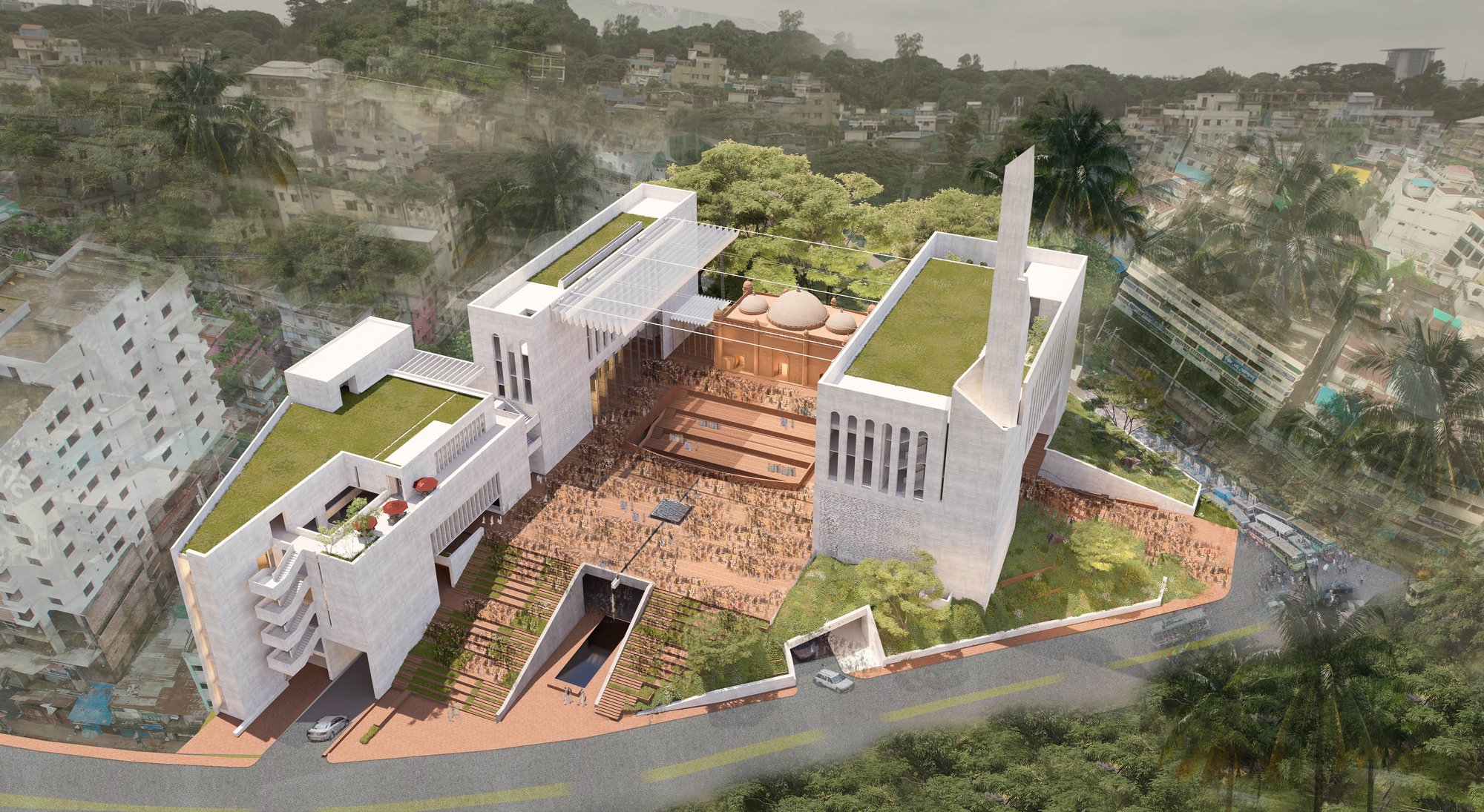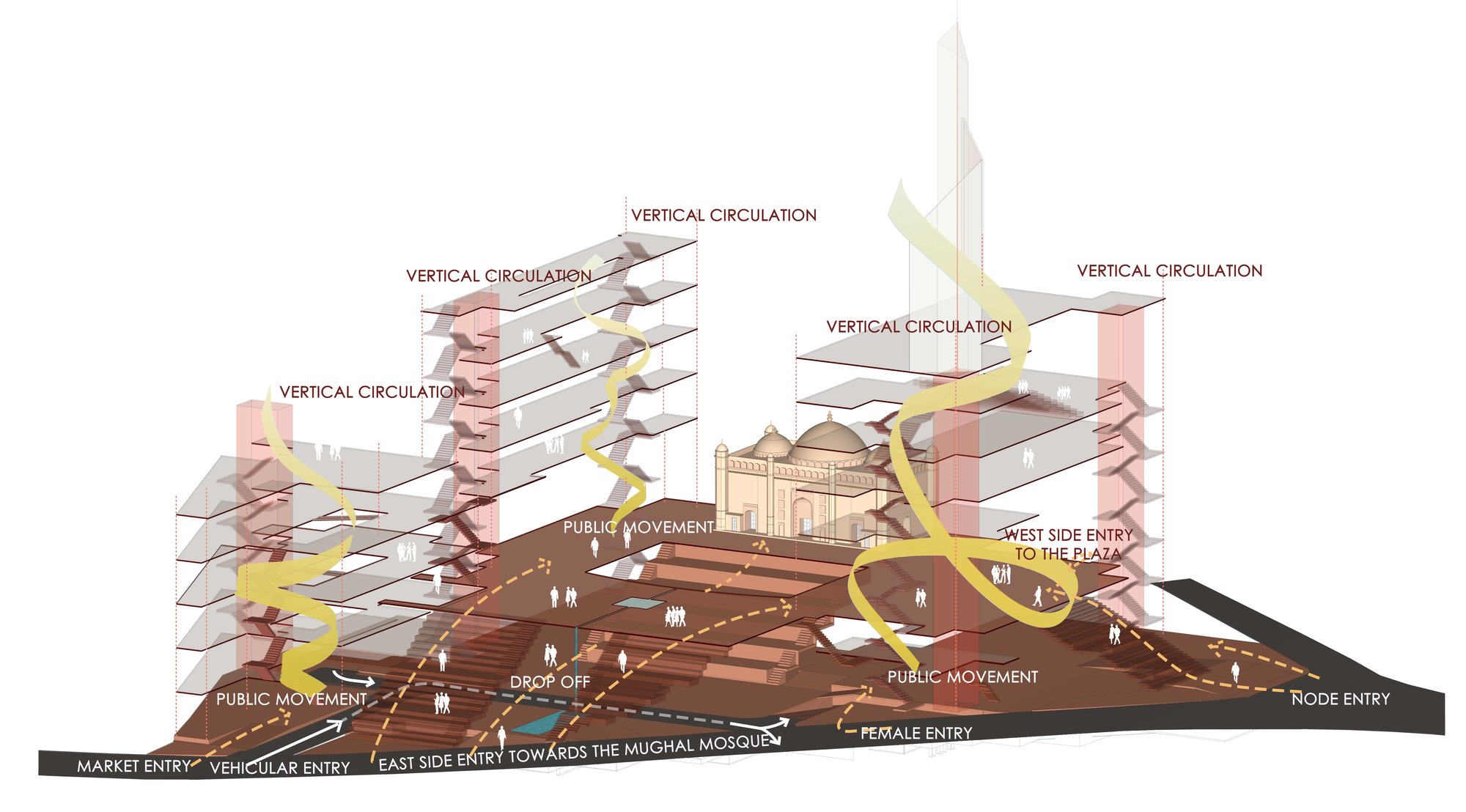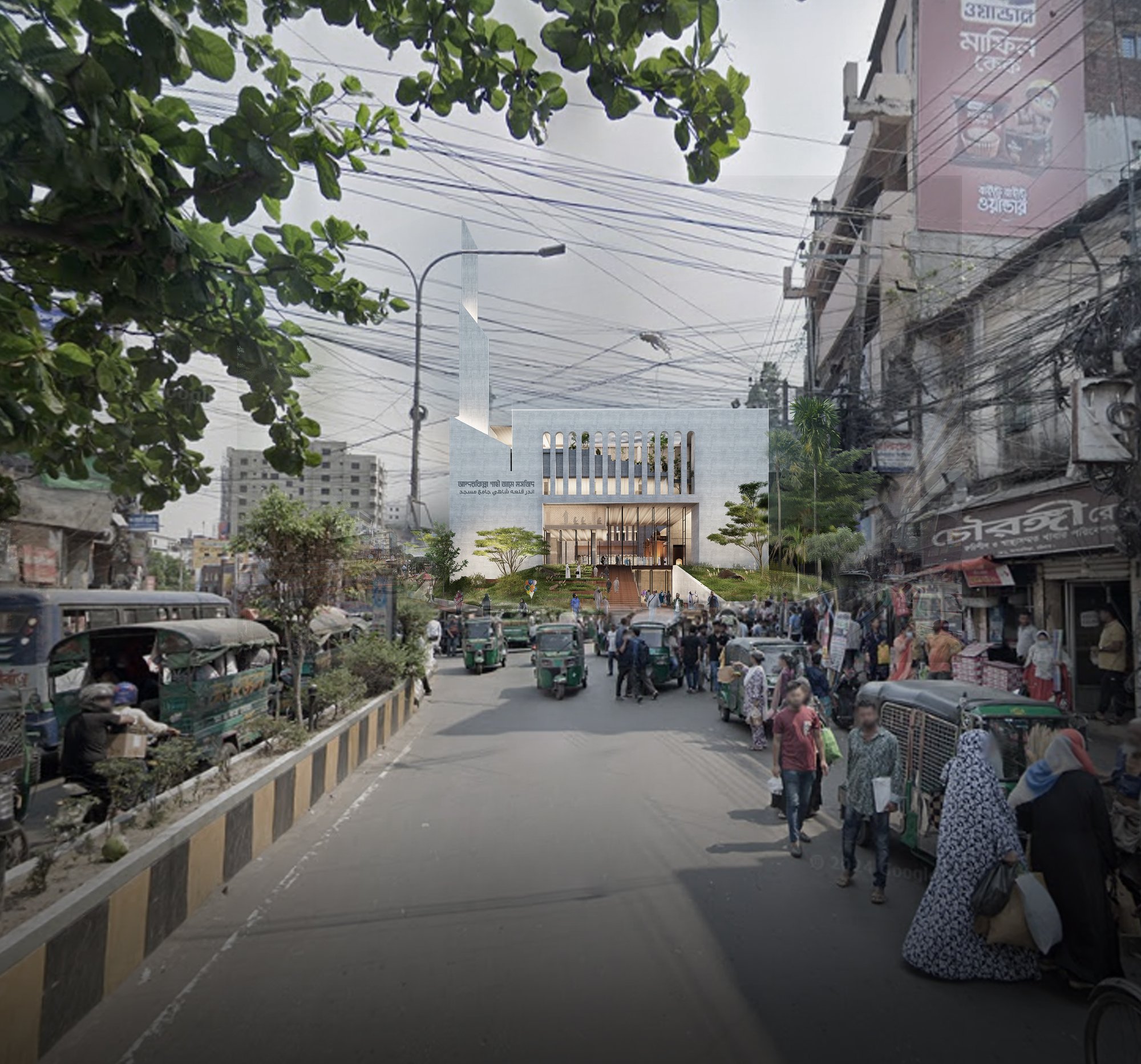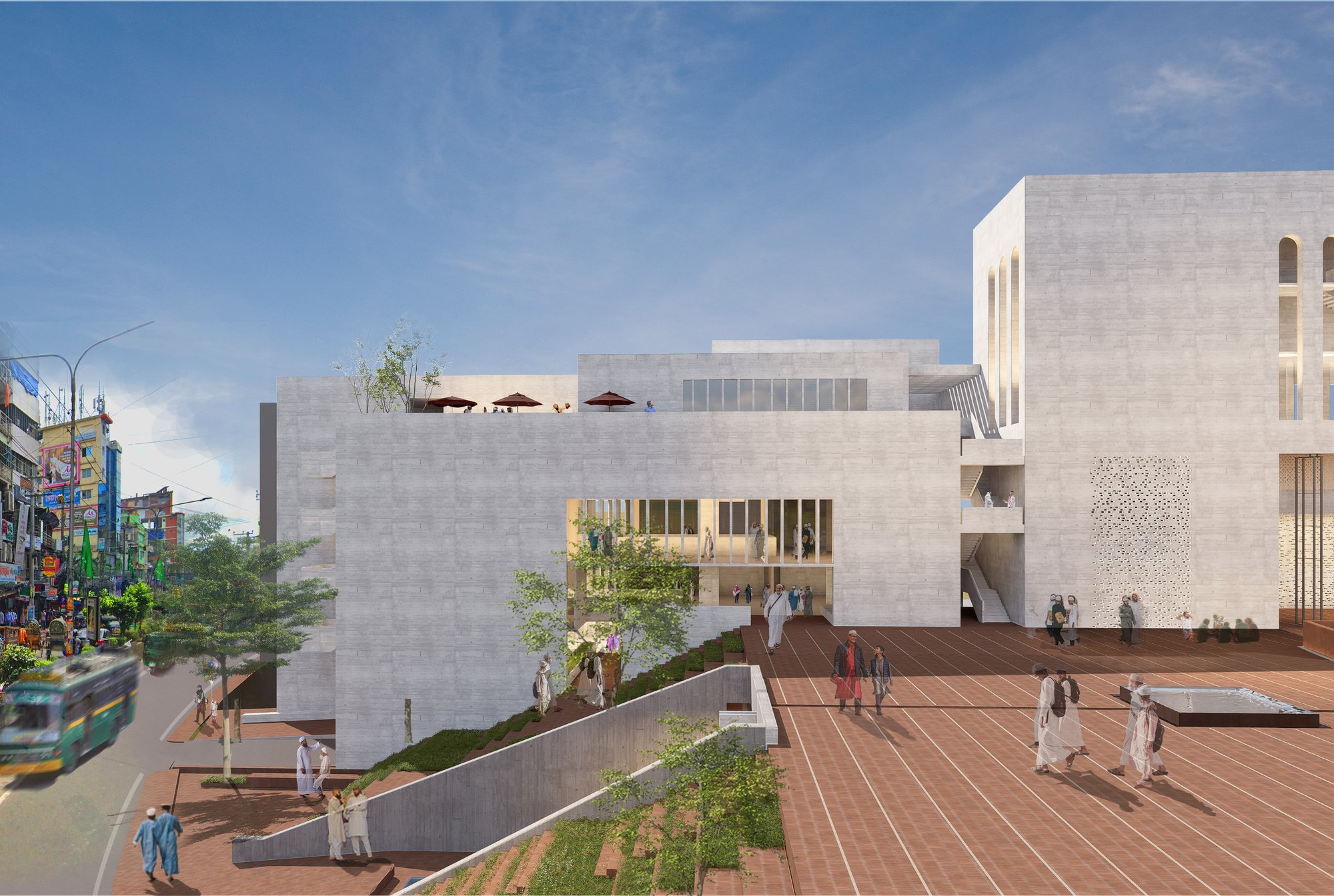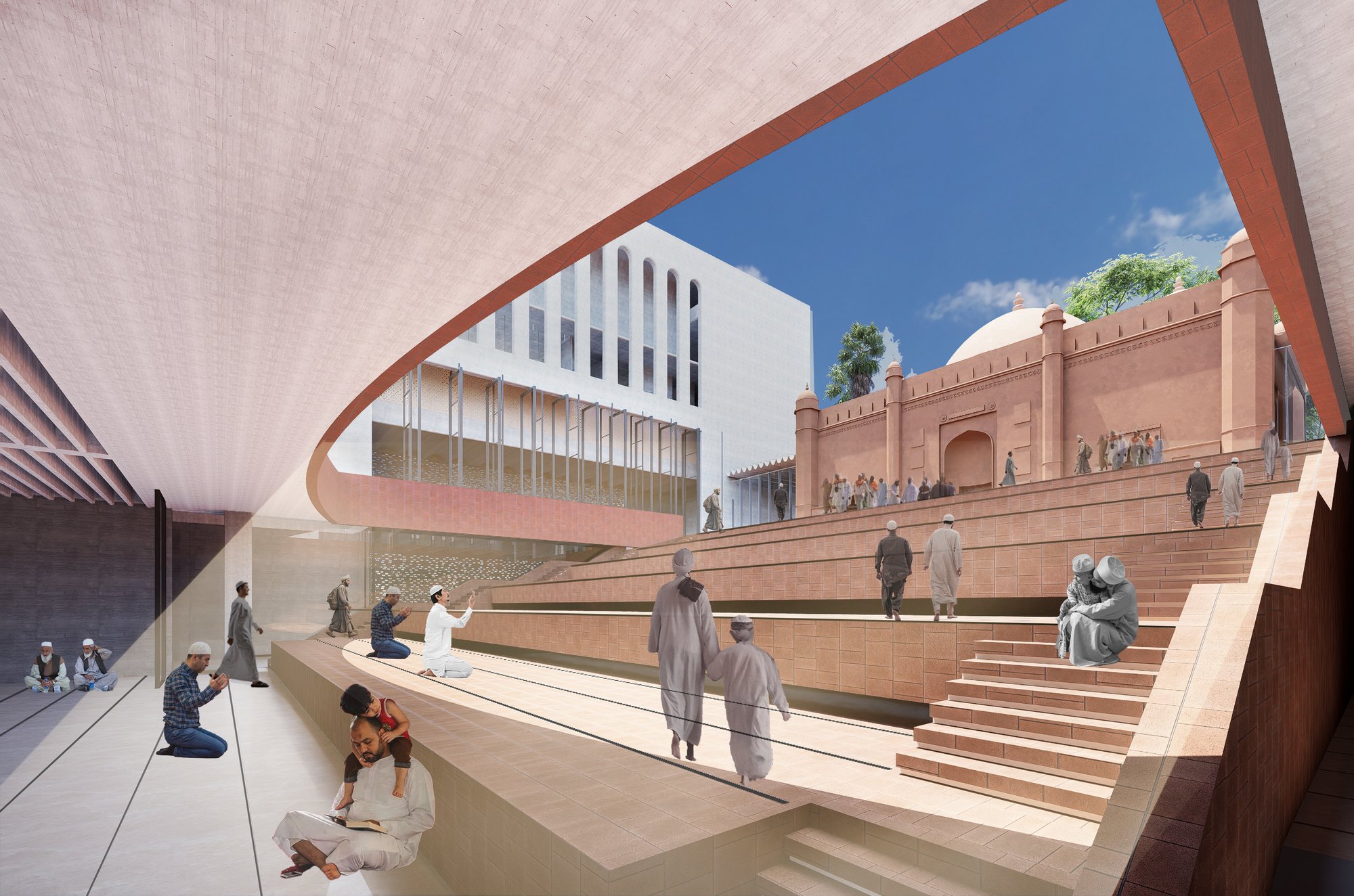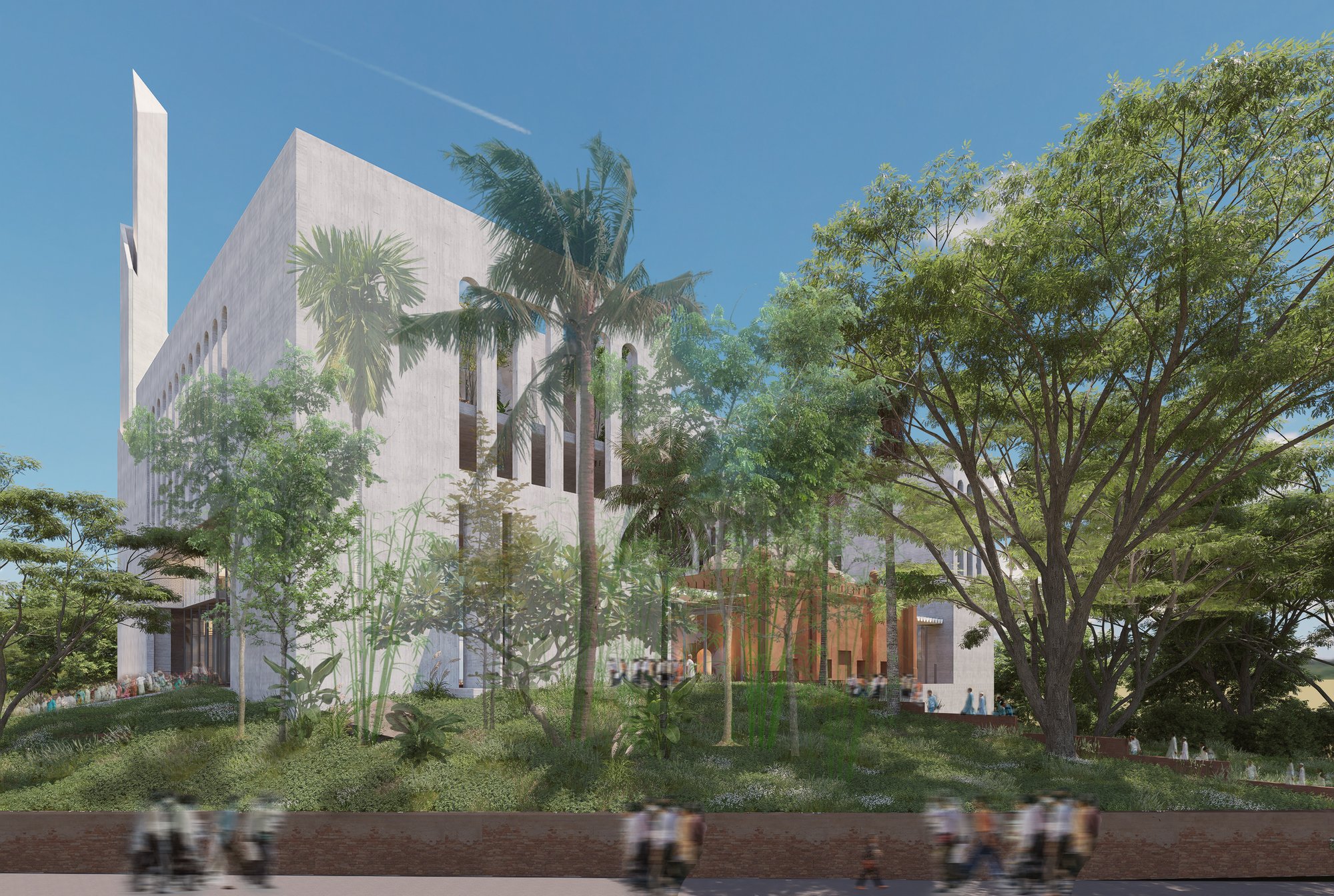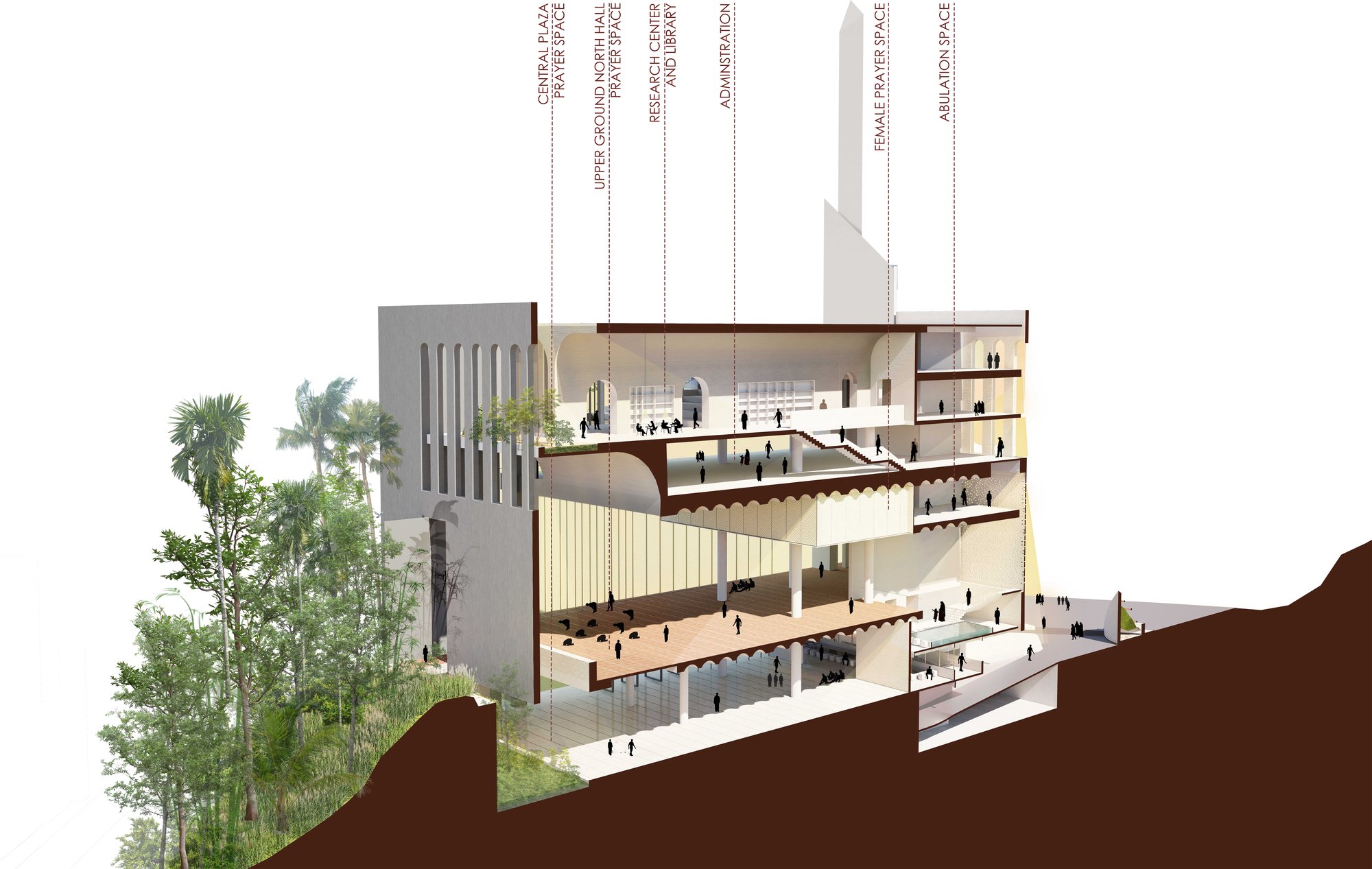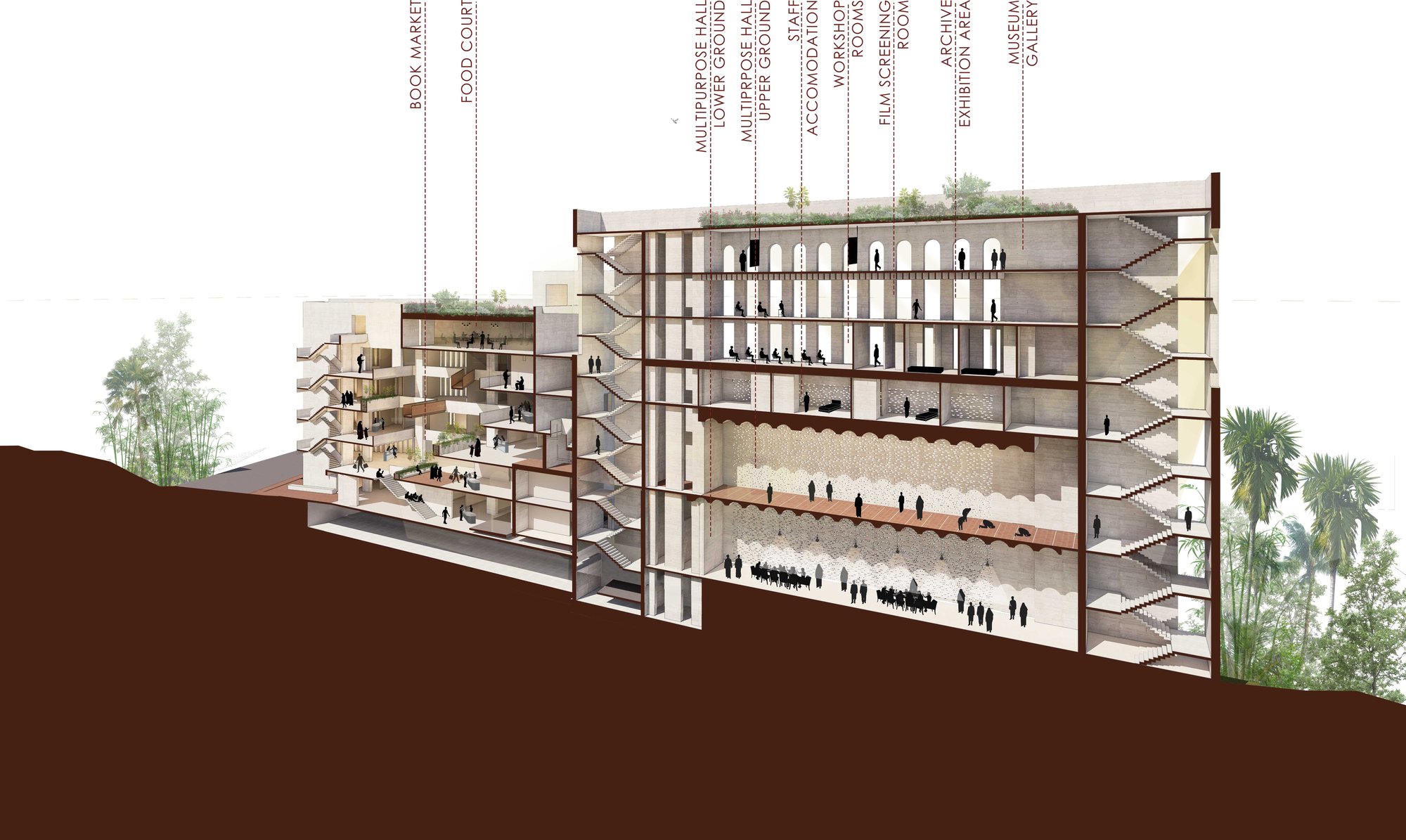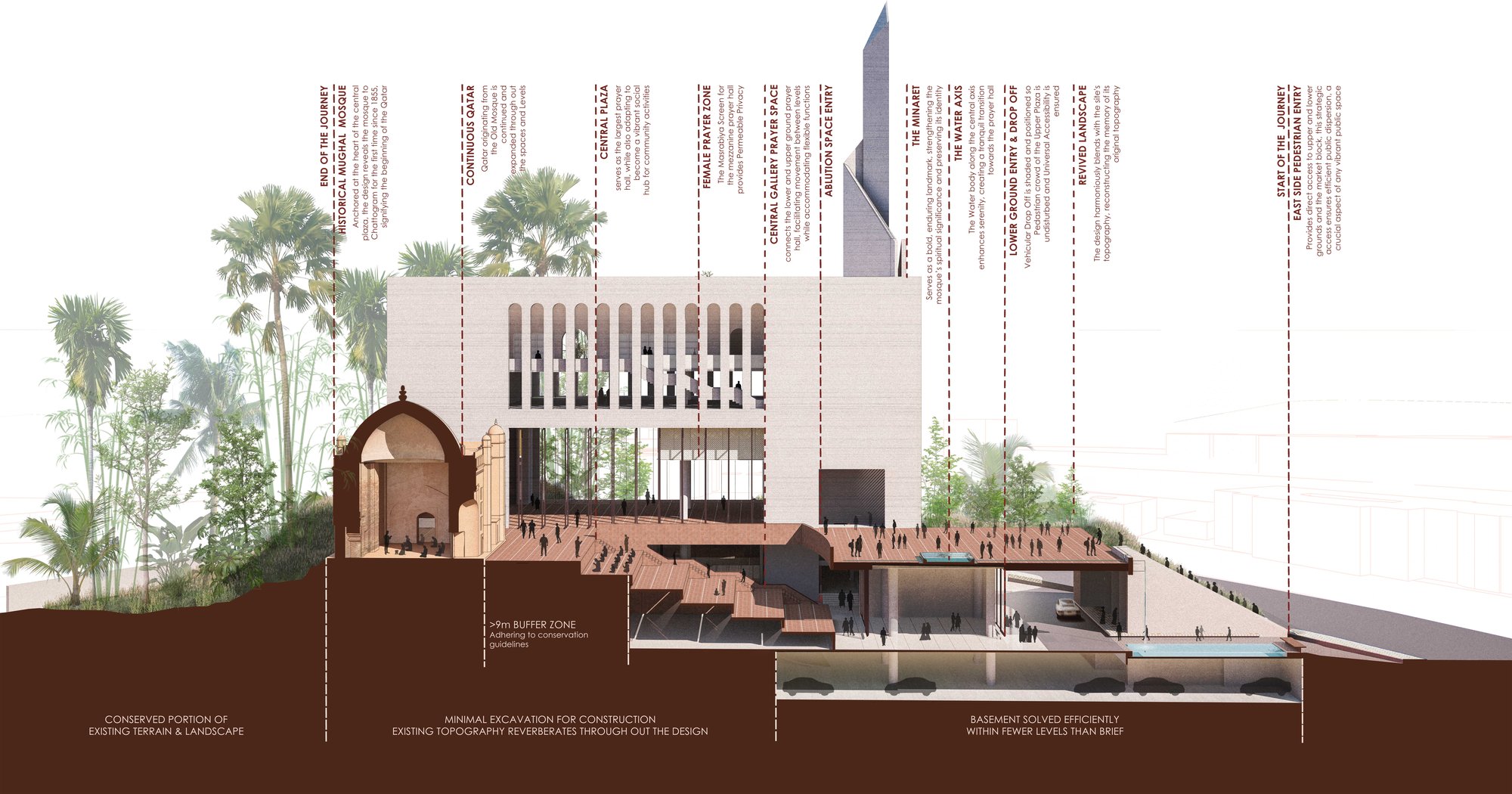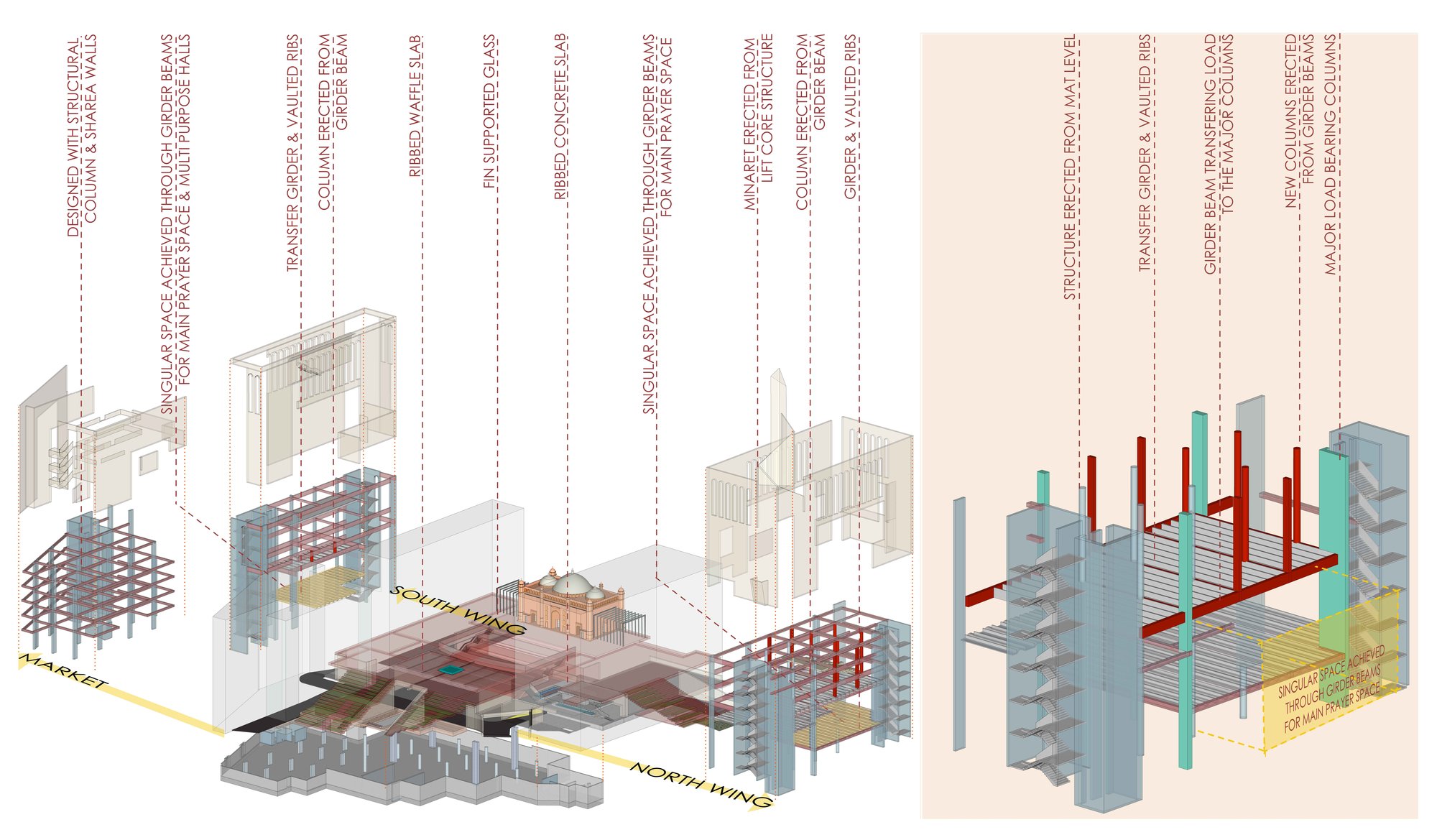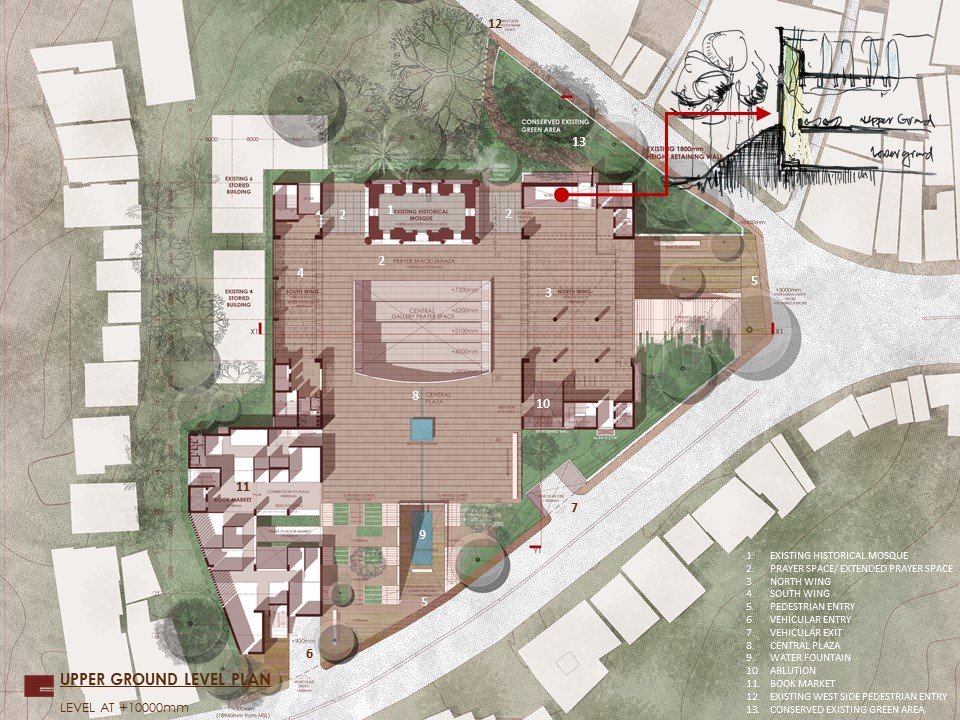RE-ENVISIONING ANDARKILLA SHAHI JAME MOSQUE
'3rd Position' winner at the Architectural Design Competition titled
"Re-envisioning Andarkilla Shahi Jame Mosque" at Andarkilla, Chattogram, organised by Institute of Architects Bangladesh and Islamic Foundation, Bangladesh.
Location: AndarKillah Mor, Chittagong
Site Area: 1.94 acre
Year of Competition: 2025
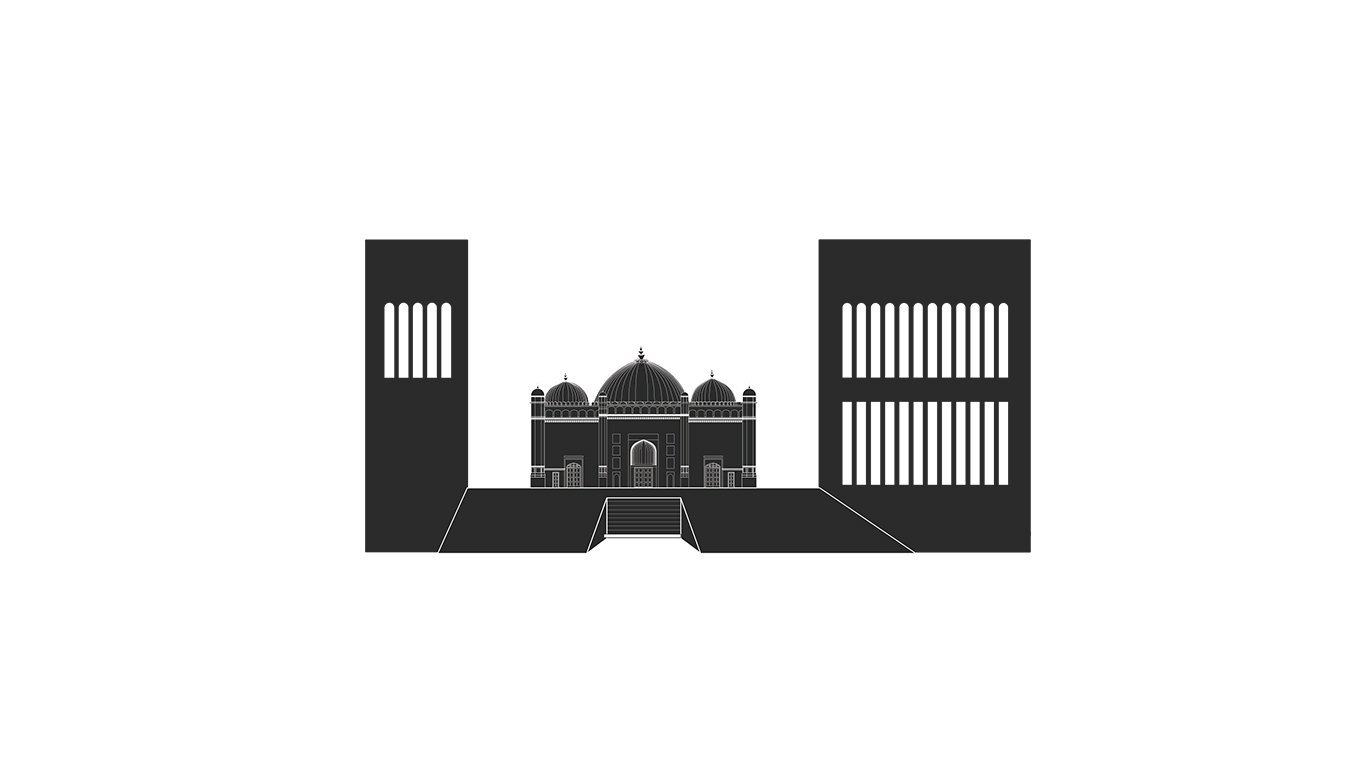
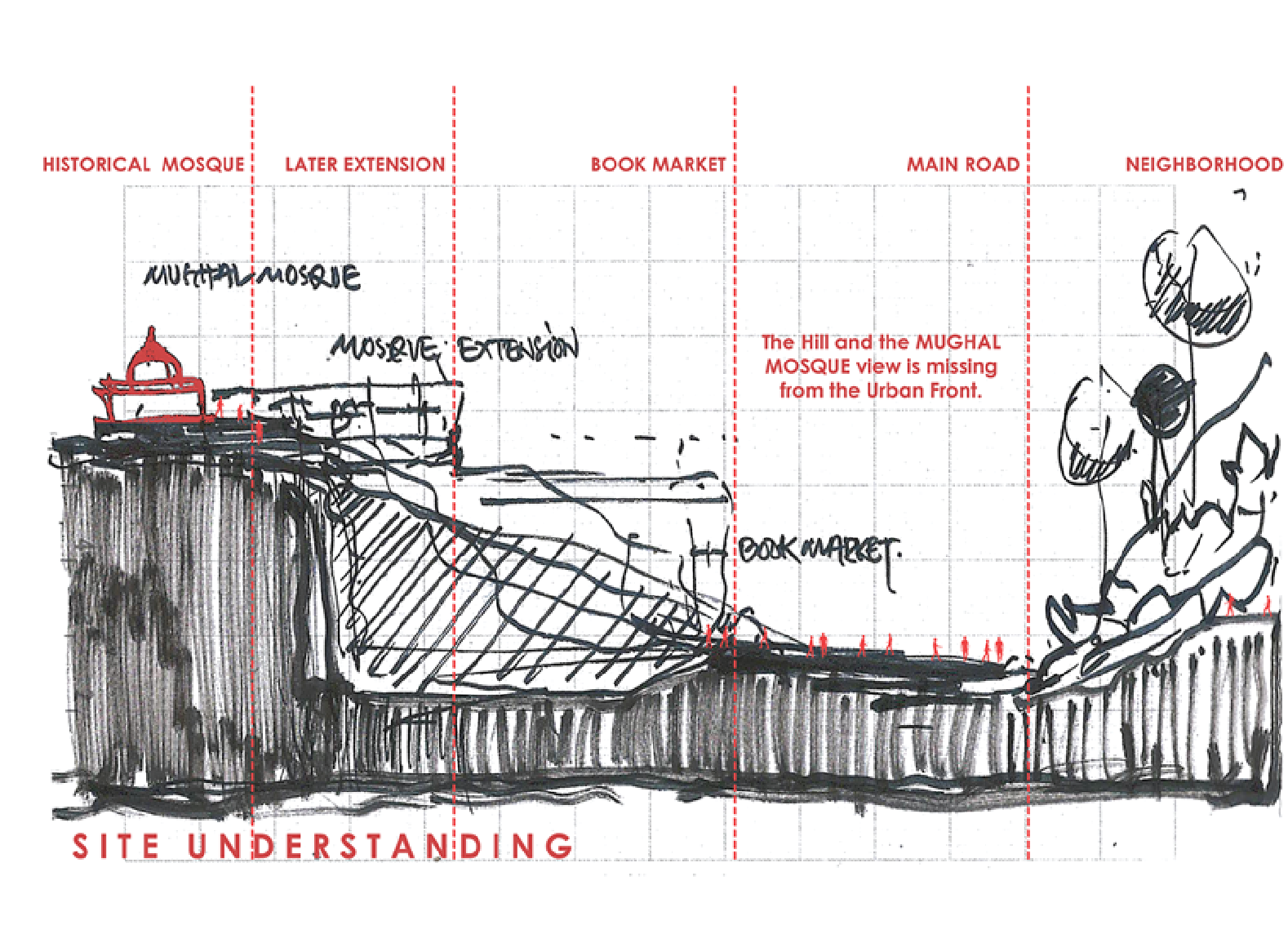
Chattogram, Bangladesh’s second-largest historical city and busiest seaport, boasts a rich cultural and historical heritage. A center of Islamic culture since the 9th century, it flourished under the Bengal Sultanate and Mughals. Influenced by Sufi saints, Chittagong thrived as a hub for trade and Islamic teachings, significantly shaping the region’s architectural and spiritual identity.
A key historical landmark, the Andarkilla Shahi Jame Mosque stands as a testament to Mughal-era architecture and cultural influence. Located in the heart of Chattogram, the mosque has undergone several modifications over time to meet the needs of an expanding population. To sustain its operations, a well-known book market, specializing in Islamic and educational books, was established on-site, transforming the area into a vibrant socio-cultural hub. The mosque is surrounded by street vendors, restaurants, and local businesses, creating a bustling center for worship, commerce, and community engagement.
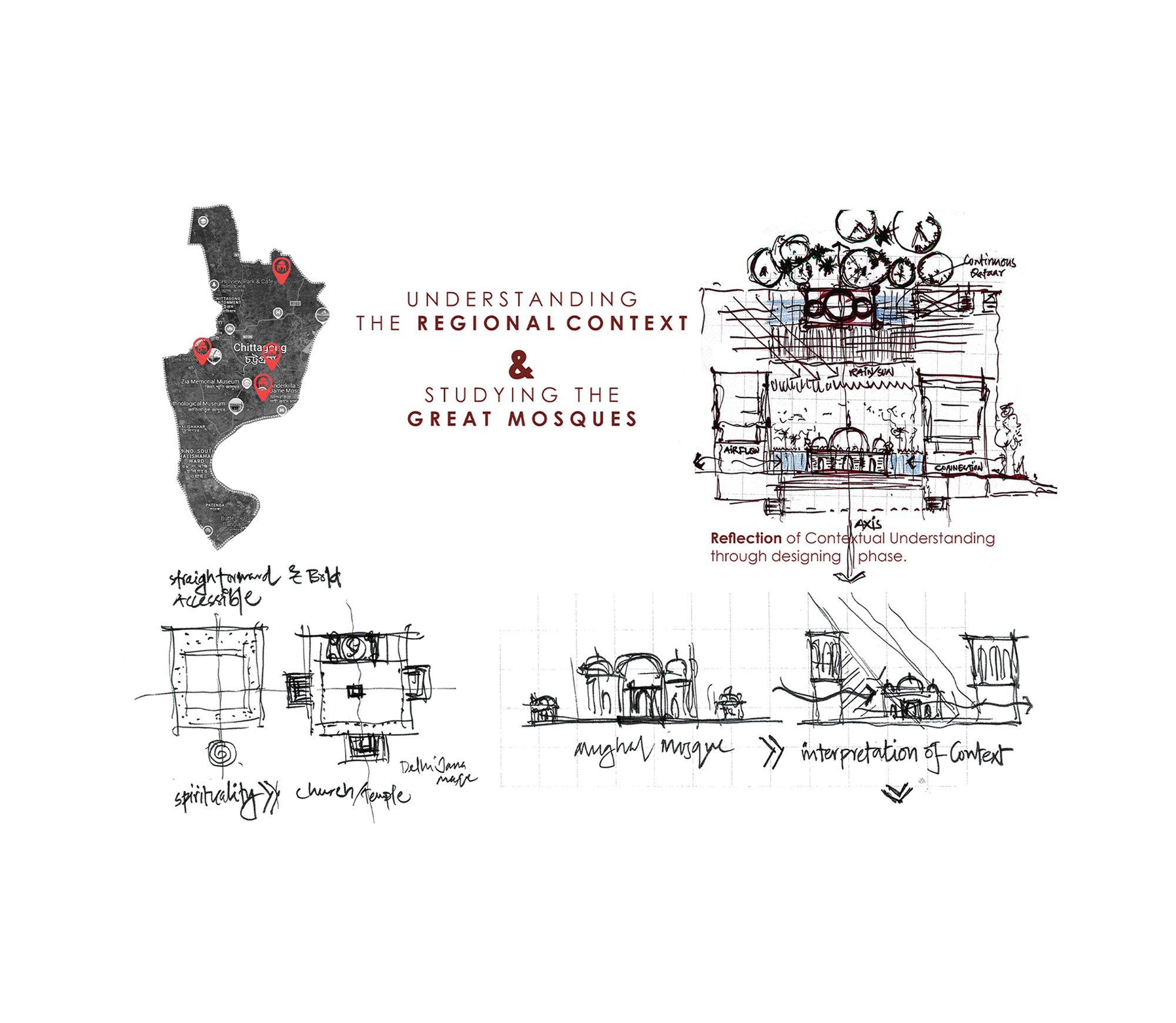
Drawing from the Jamiatul Falah Masjid, the city’s largest mosque, which connects indoor and outdoor spaces to create loftiness, our redesign revives the plaza as a dynamic gathering space, reinforcing the mosque’s central role in the community. The plaza is designed with symmetry along a central axis, reflecting the mosque’s meditative essence.
This proposal blends Mughal and local mosque influences, particularly in terms of loftiness and courtyards. Drawing inspiration from these elements, we have created a contextually relevant contemporary mosque design.
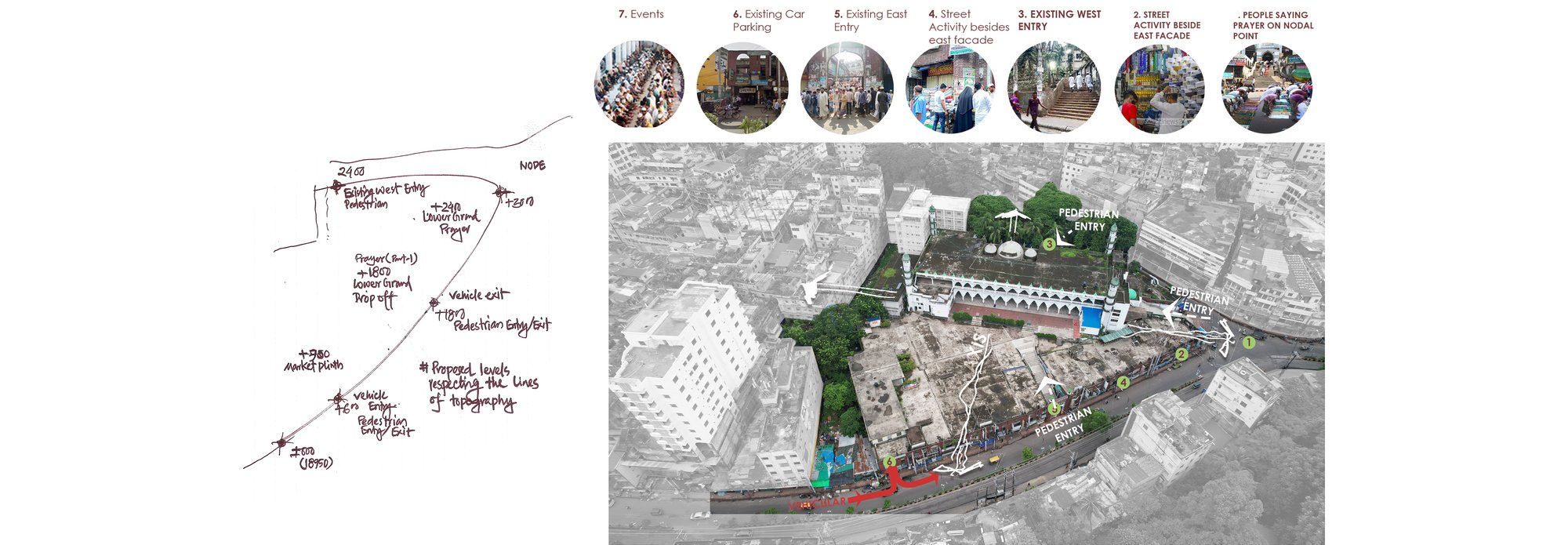
Historically, the mosque’s plaza faced the Karnafuli River to the south and the Bay of Bengal to the west, with key roads converging at the Andarkilla node—an important urban junction. Acknowledging this historical significance, the design retains the Andarkilla node as the primary pedestrian entrance, accessible from both upper and lower ground. This ensures that during peak prayer times, the congregation can seamlessly expand toward the adjacent roads.
Over time, commercial and residential developments gave rise to a secondary access point on the east. The design embraces this transformation, maintaining it as an additional entry with separate pedestrian and vehicular access.
The site's unique topography enables an additional western access route, weaving through the lush greenery behind the old mosque. This entrance, shaped by the natural contours of the landscape, has also been thoughtfully integrated into the design, ensuring a seamless connection between the mosque and the newly added structures while prioritizing the preservation of existing greenery. Serving as a vital neighborhood link, this route remains the preferred entry for the local community.
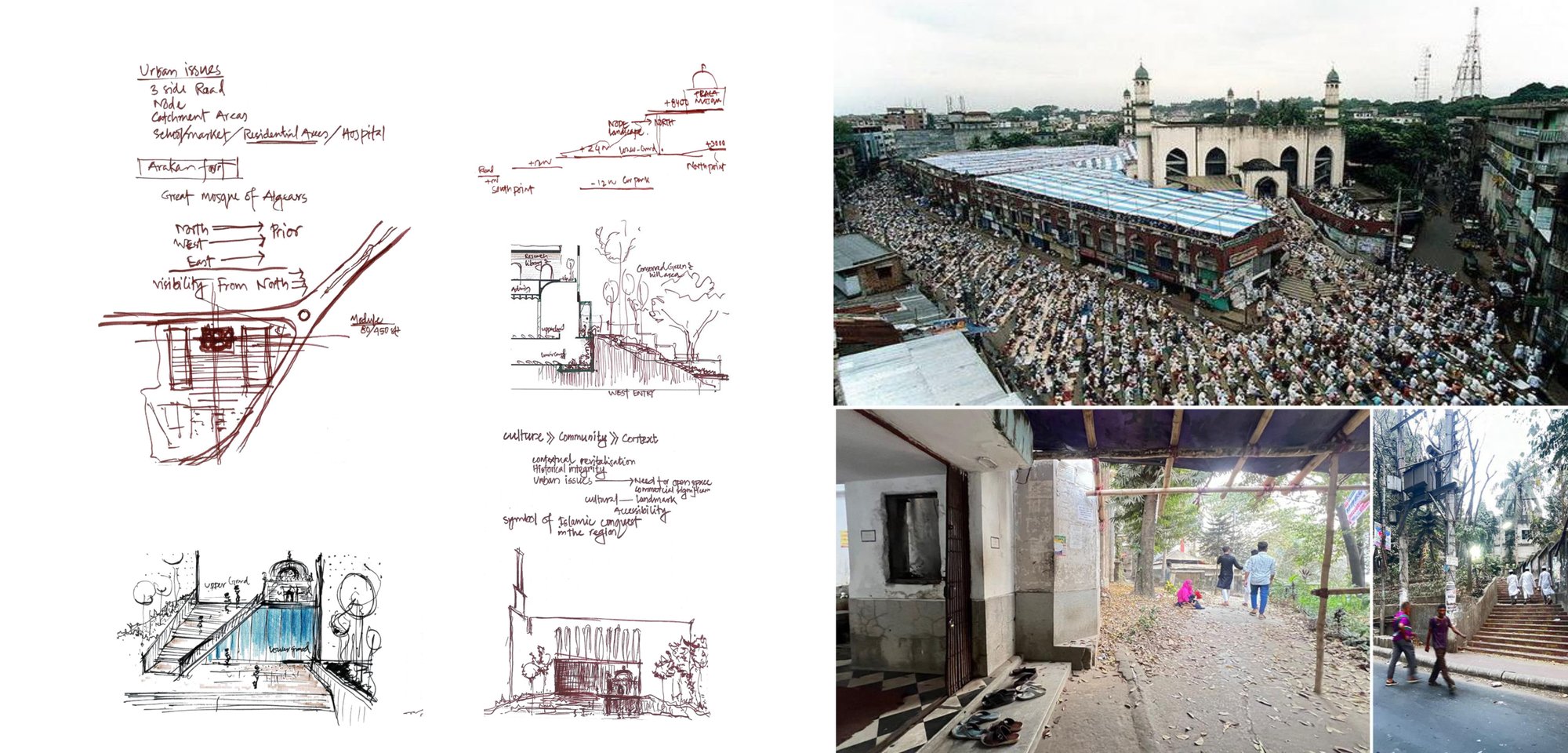

This project envisions the Andarkilla Mosque in Chattogram as a timeless convergence of history, spirituality, and contemporary design. Rather than altering the essence, the architectural approach seeks to amplify the mosque’s presence—honoring its sacred heritage while weaving it seamlessly into the evolving urban fabric. The design fosters a profound connection between worshippers and their sacred space, ensuring that the spiritual sanctity of the mosque remains undisturbed while enhancing its accessibility and relevance to the modern city. The design aims to connect people of the community, even a passerby, regardless of their religious beliefs, due to the profound historic significance of the site.
Balancing reverence for tradition with the needs of contemporary worshippers, the proposal carefully negotiates the interplay between built form and open space. A redefined plaza establishes a renewed sense of arrival, restoring the mosque as the central focal point within its surroundings. As a community space the mosque is open and accessible to the community at all times of the day.
Two newly positioned blocks to the north and south provide essential programmatic spaces while framing the historic Mughal mosque with intentionality—offering climatic comfort without imposing on its visual or spiritual prominence. By unveiling the mosque to Chattogram for the first time since 1855, this intervention restores its stature as a beacon of faith and community. The spatial strategy emphasizes continuity, coherence, and an uninterrupted sacred experience. The prayer hall remains singular and unified, fostering a seamless spiritual journey that deepens the worshippers' engagement with the divine. The relocation of the book market enhances both functional efficiency and architectural integrity, allowing the mosque to reclaim its rightful presence within the city’s collective memory.
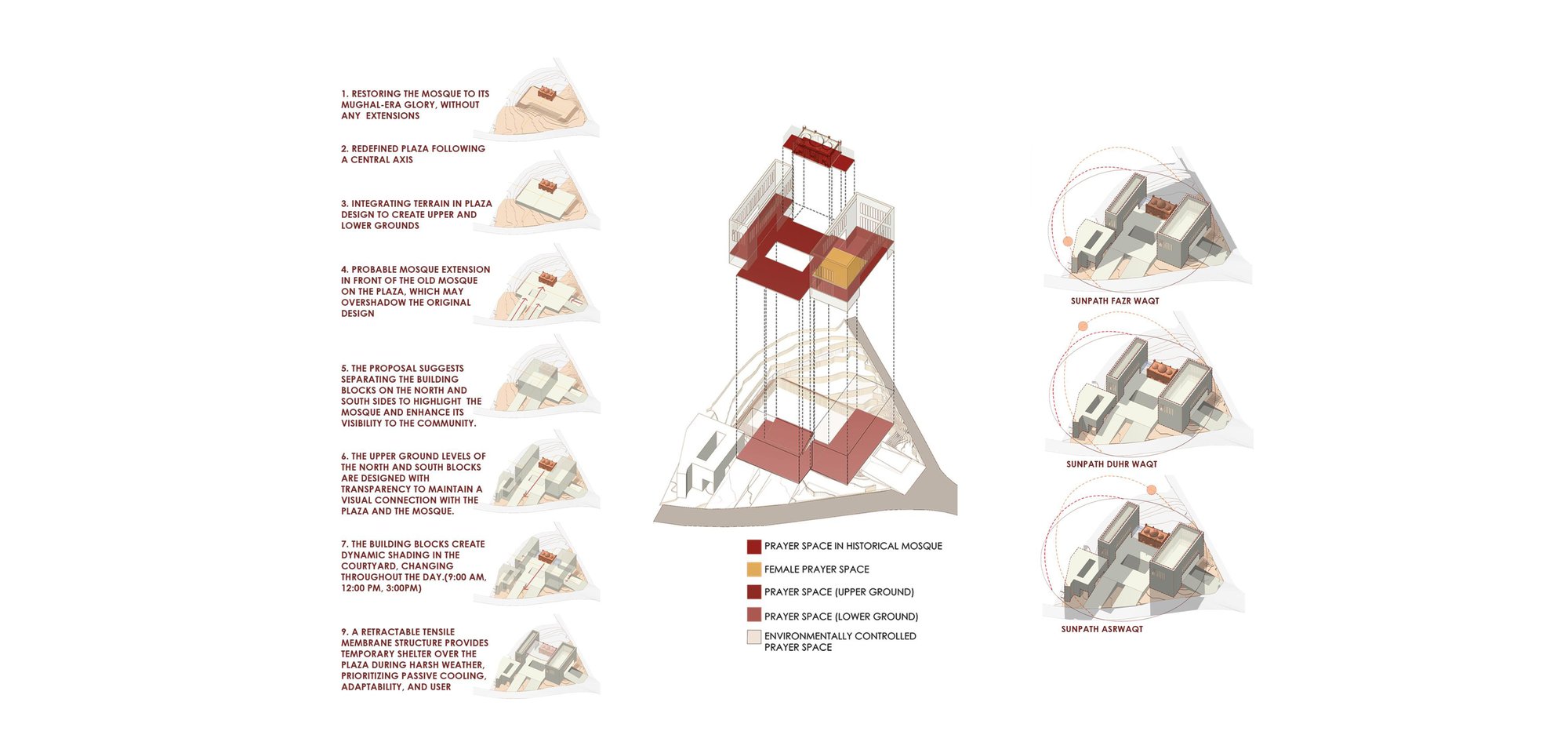
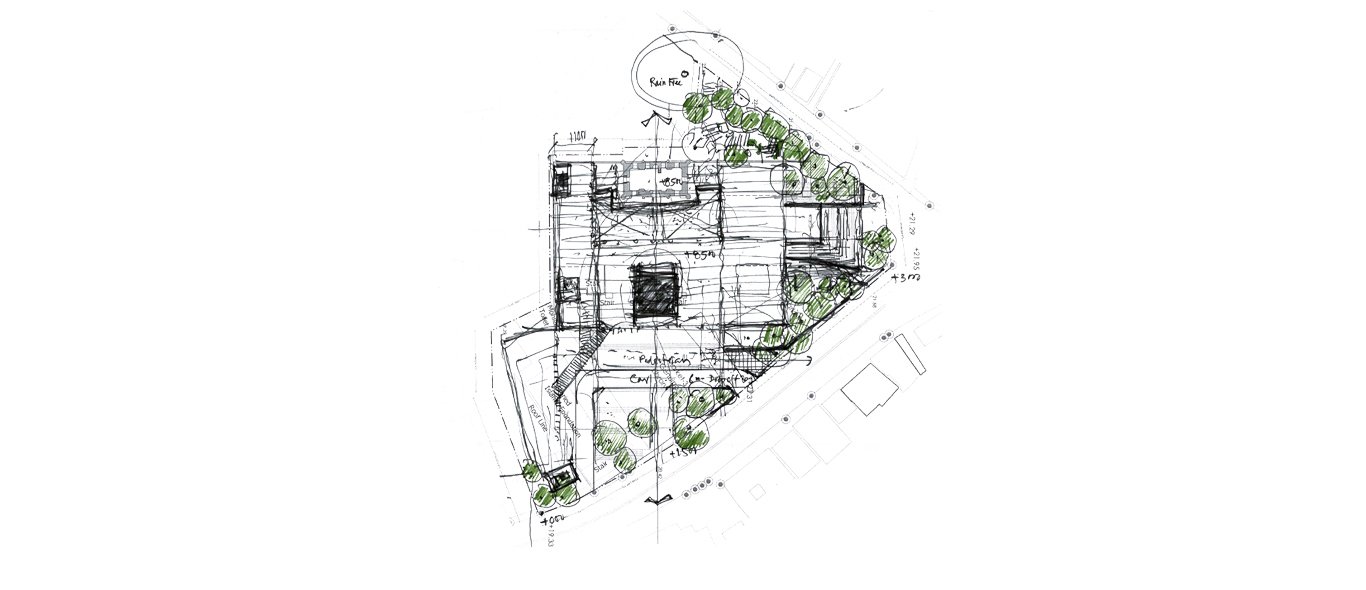
Our design proposal positions the central plaza as the primary prayer space, prioritizing openness and passive cooling over permanent enclosures. Rather than covering the entire area with a fixed structure, we introduce a flexible solution that aligns with the natural ventilation and loftiness characteristic of Mughal mosques.
A key design decision was to position the new structures to frame the historic mosque from the entry points, enhancing its prominence rather than overshadowing it. To define the spatial volume of the plaza, two blocks are strategically placed to the north and south 9m from the historic Mughal mosque following conservation rules, integrating essential mosque functions while preserving a strong visual and spatial connection to the old mosque.
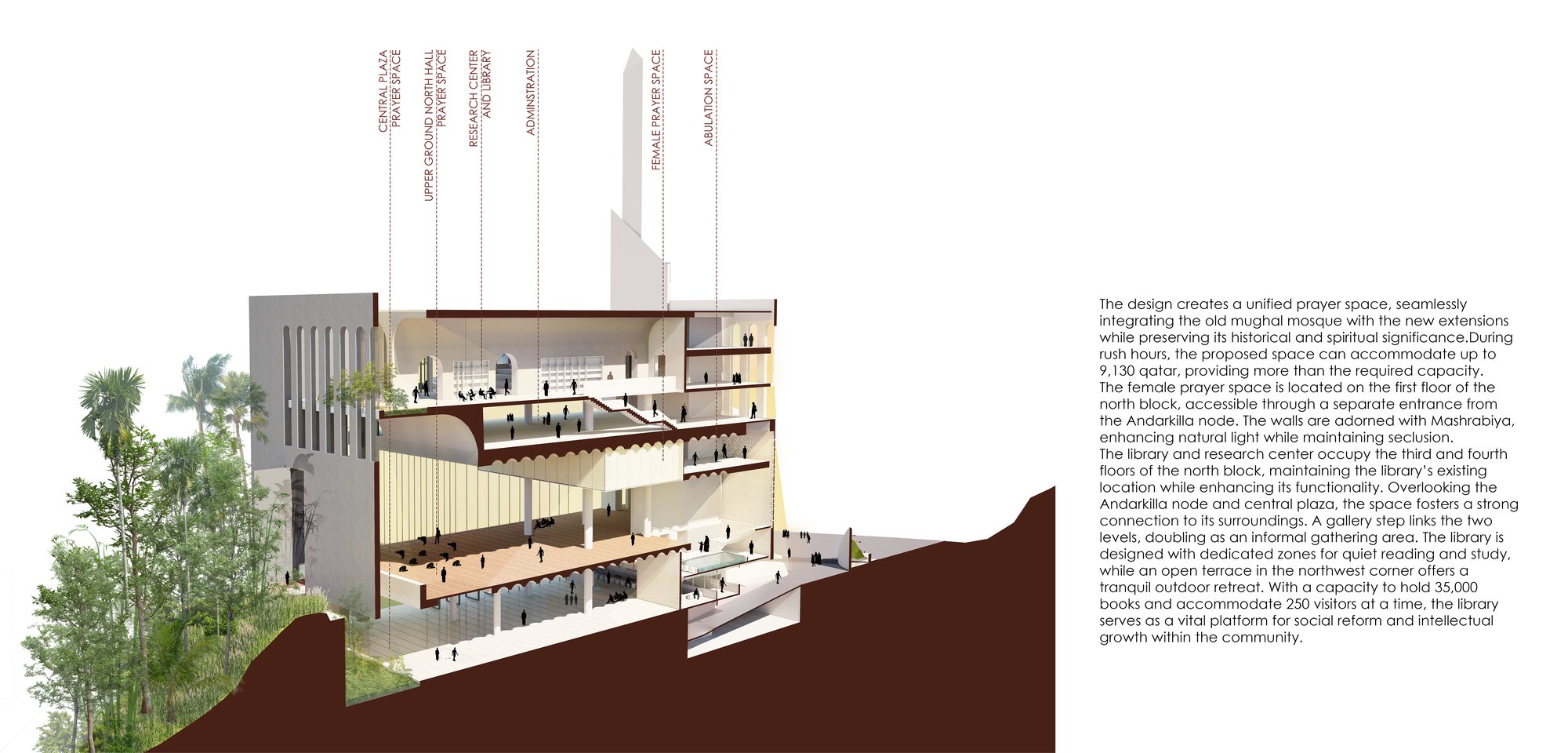
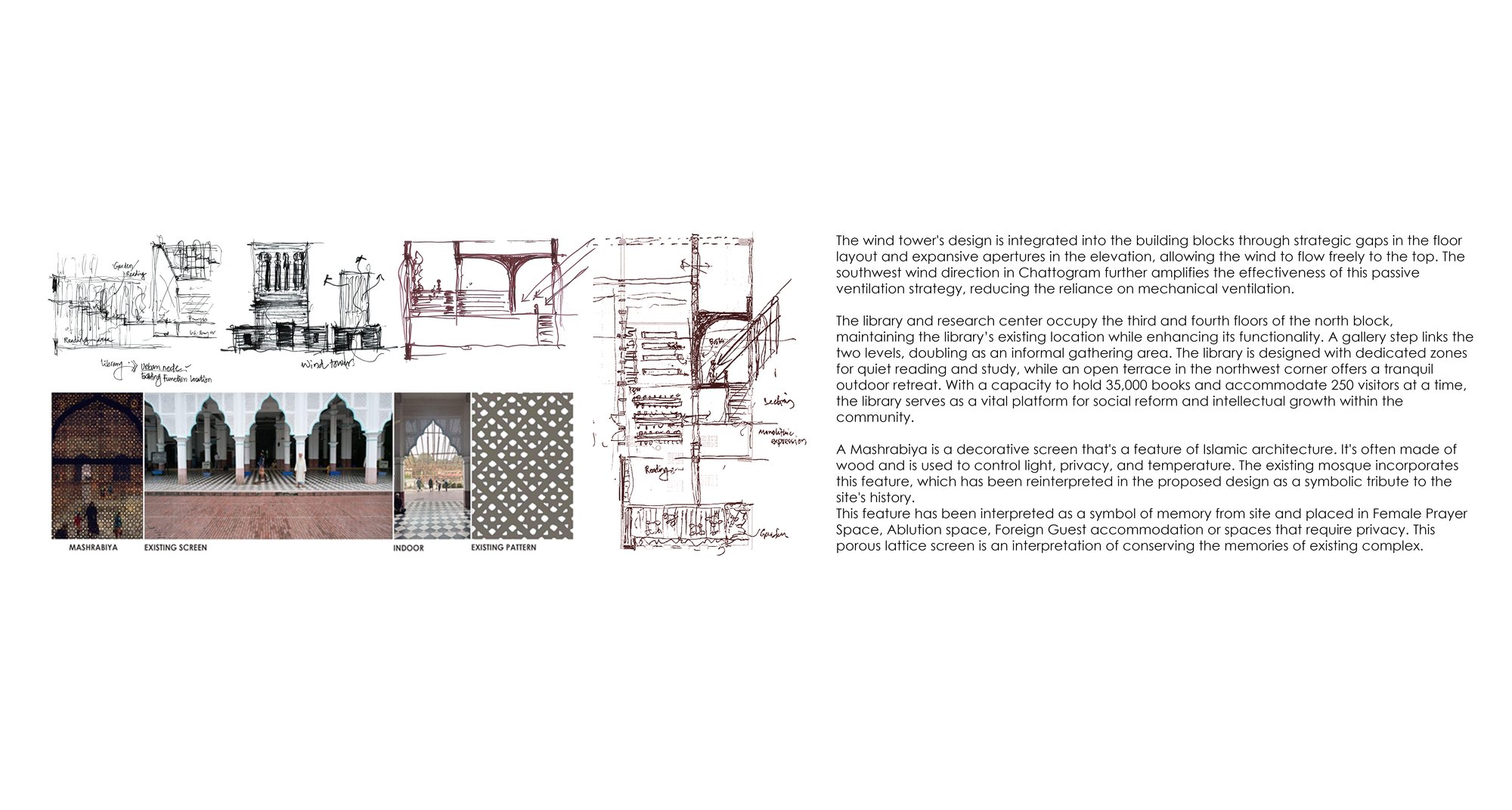
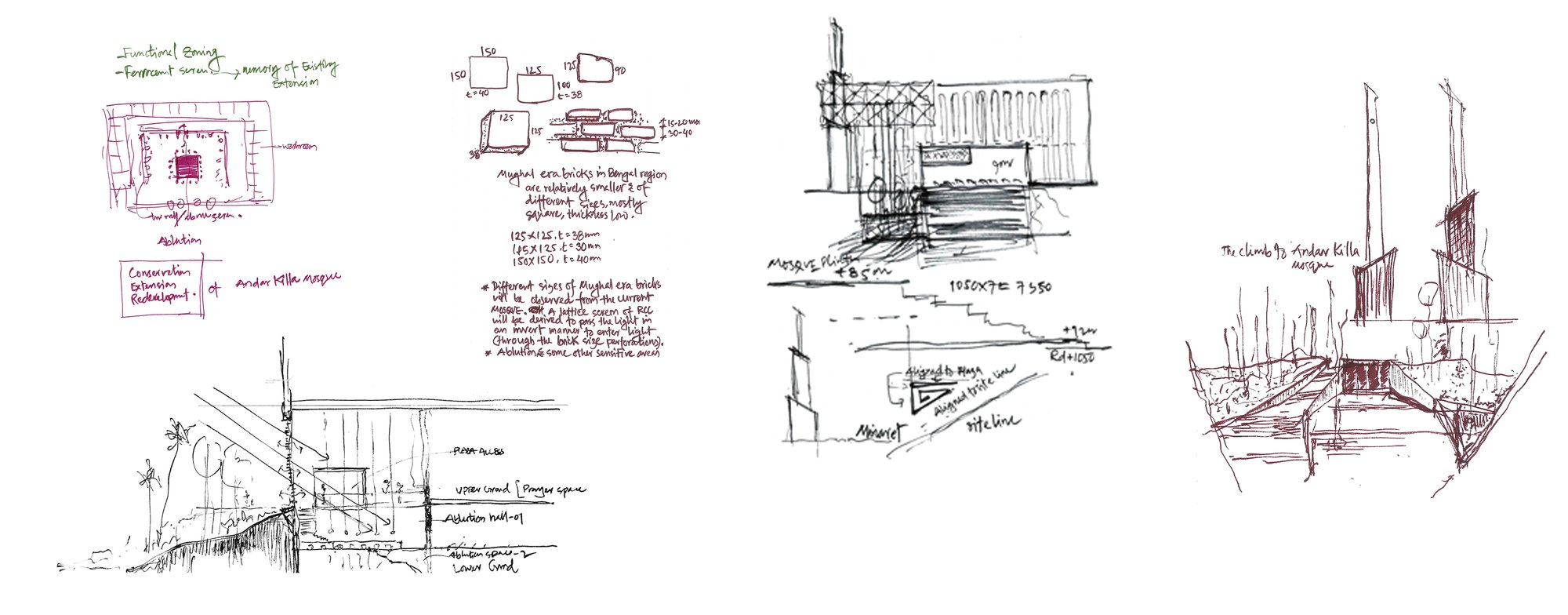
The ablution area is thoughtfully designed as a symbol of purification, serving as a transitional space where worshippers prepare for their spiritual journey. The walls are constructed with RCC, incorporating hollow brick modules inspired by those found in Mughal mosques. This brick module was also observed in the existing mosque during the site visit. The carefully designed RCC lattice screen allows light to filter through brick-sized perforations, creating a serene interplay of light and shadow that enhances the spiritual ambiance.
Minarets, a hallmark of Mughal architecture, traditionally serve as directional markers. Though absent in the original Andarkilla mosque, four were added during the Pakistani period, becoming community symbols. In our design, we reinterpret this symbolism with a single, prominent minaret that represents a new symbol of triumph. This minaret, inspired by the past yet modern in design, serves as a bold, enduring landmark for Chittagong.
Rooted in Mughal architectural principles, the design embodies symmetry, balance, and an intrinsic dialogue with nature. Expansive open spaces and structured geometries cultivate an atmosphere of tranquility, reflection, and communal unity. This architectural language transcends mere function—it elevates the act of worship into an immersive, holistic experience, creating an inviting serene space for all its visitors. Through this thoughtful intervention, the Andarkilla Mosque is not just preserved but revitalized, ensuring its legacy endures for generations to come as a spiritual and cultural cornerstone of Chattogram..
